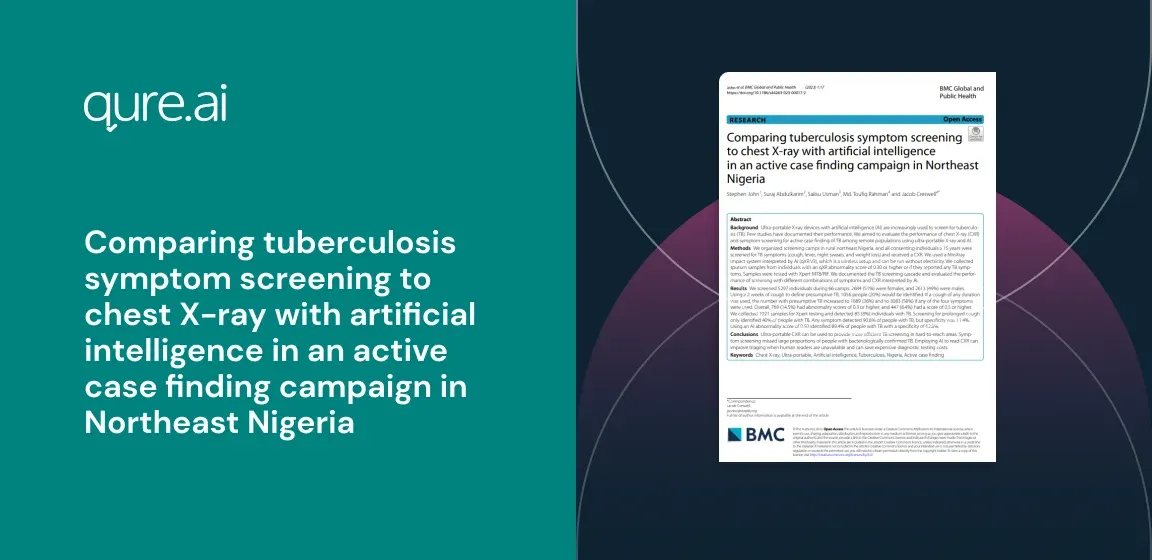Background:

Back
Ultra-portable X-ray devices with artificial intelligence (AI) are increasingly used to screen for tuberculosis (TB). Few studies have documented their performance. We aimed to evaluate the performance of chest X-ray (CXR) and symptom screening for active case finding of TB among remote populations using ultra-portable X-ray and AI.
Methods:
We organized screening camps in rural northeast Nigeria, and all consenting individuals ≥ 15 years were screened for TB symptoms (cough, fever, night sweats, and weight loss) and received a CXR. We used a MinXray Impact system interpreted by AI (qXR V3), which is a wireless setup and can be run without electricity. We collected sputum samples from individuals with an qXR abnormality score of 0.30 or higher or if they reported any TB symptoms. Samples were tested with Xpert MTB/RIF. We documented the TB screening cascade and evaluated the performance of screening with different combinations of symptoms and CXR interpreted by AI.
Results:
We screened 5297 individuals during 66 camps: 2684 (51%) were females, and 2613 (49%) were males. Using ≥ 2 weeks of cough to define presumptive TB, 1056 people (20%) would be identified. If a cough of any duration was used, the number with presumptive TB increased to 1889 (36%) and to 3083 (58%) if any of the four symptoms were used. Overall, 769 (14.5%) had abnormality scores of 0.3 or higher, and 447 (8.4%) had a score of 0.5 or higher. We collected 1021 samples for Xpert testing and detected 85 (8%) individuals with TB. Screening for prolonged cough only identified 40% of people with TB. Any symptom detected 90.6% of people with TB, but specificity was 11.4%. Using an AI abnormality score of 0.50 identified 89.4% of people with TB with a specificity of 62.8%.
Conclusions
Ultra-portable CXR can be used to provide more efficient TB screening in hard-to-reach areas. Symptom screening missed large proportions of people with bacteriologically confirmed TB. Employing AI to read CXR can improve triaging when human readers are unavailable and can save expensive diagnostic testing costs.